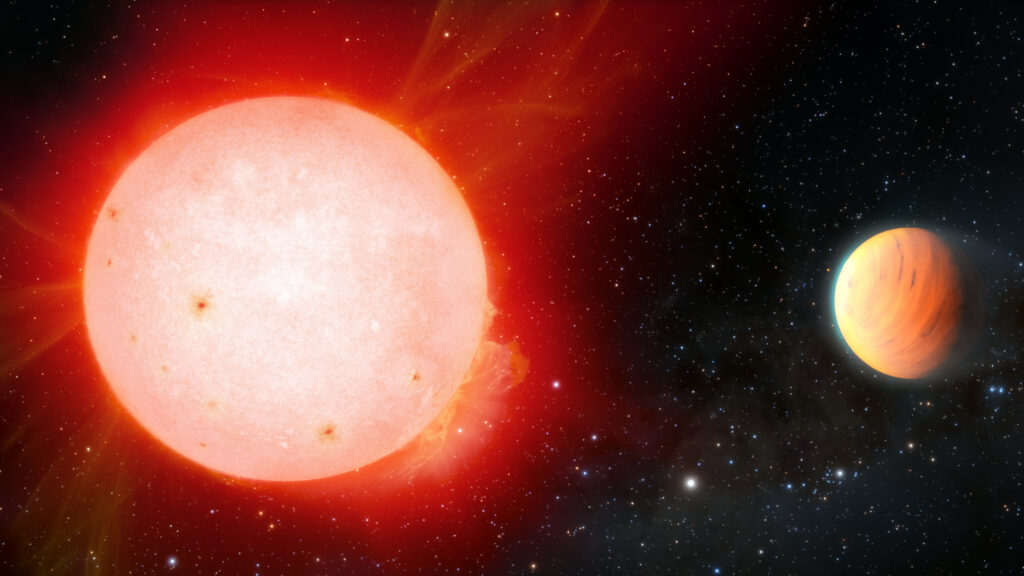During the analysis of data from the TESS telescope, a team of American astronomers found a periodic decrease in the brightness of two stars. Subsequent verification confirmed that they were caused by transits of exoplanets orbiting around them.

The first exoplanet found by researchers orbits the red dwarf TOI-3984A, located 353 light-years from the Sun. Estimates of the star’s age range from 0.7 to 5.1 billion years. It also has a companion in the form of a white dwarf moving in a wide orbit, located at a distance of 356 AU (this is twelve times more than the distance from the Sun to Neptune).
As for the exoplanet, its radius is 0.71 of the radius of Jupiter, and its mass is 0.14 of the mass of Jupiter. This gives an average density of 0.49 g/cm3. Astronomers classify such bodies as sub-Saturn. The orbit of the exoplanet passes at a distance of 0.041 AU (6 million km) from the parent star, the equilibrium temperature of its surface is 290 °C.
The second exoplanet orbits the red dwarf TOI-5293A, located at a distance of 524 light-years from the Sun. It also has a companion in the form of another red dwarf. They are separated by a distance of 579 AU.
The exoplanet orbiting TOI-5293A is a gas giant. With a radius similar to that of Jupiter, its mass is almost half the mass of the largest planet in the Solar System. This gives an average density of 0.56 g/cm3. The orbit of the exoplanet passes at a distance of 0.034 AU (5 million km) from the star, its equilibrium temperature is 400 °C.
According to the researchers, the worlds they found are among the “coldest” gas giants among those which orbit at such a short distance from their stars. This makes them very promising candidates for subsequent atmospheric research.
Earlier we talked about how astronomers photographed a newborn exoplanet.
According to https://phys.org
Follow us on Twitter to get the most interesting space news in time
https://twitter.com/ust_magazine

